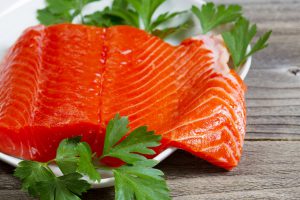
CNN recently claimed gym go-er’s can exercise off the negative health risks associated with alcohol—but it has left scientists rolling their eyes at the weight rack. The article took its presumptuous turn when the conclusion from an observational study was “exercising the recommended amount “cancels out” the higher risk of cancer death brought about by drinking”. By the sheer nature of an observational study, it is scientifically impossible to make a statement of this magnitude. Though physical activity attenuates the risk of cancer, a closer analysis of the study design raises some points of concern that could be influencing the results.
It is extremely important to analyze how participants were characterized for analysis; the following table demonstrates researchers organization scheme. Physical activity was collected from self-report data which was validated against accelerometers (the “gold standard”). However, it was only validated in the English cohort, not the Scottish cohort. Considering the conclusions were based on survey data, readers need to be mindful of how inaccurate self-reporting can be. The different categories of alcohol consumption were also collected from self-report data, which may not be wholly accurate, especially at the two extremes of rare or excessive alcohol intake. An important limitation of the article is the lack of analysis regarding the patterns of alcohol consumption. Researchers noted a health difference between binge drinking and other drinking patterns—this was not mentioned on CNN.
|
Categories of Alcohol Intake |
Physical activity categories |
| 1. Never drunk | Inactive (<7 MET*-hour/wk)
* MET = Metabolic equivalent |
| 2. Ex-drinkers | |
| 3. Occasional drinkers | Active lower (>7.5 MET-hr/wk) |
| 4. Within guidelines (<14 W, <21 M) | |
| 5. Hazardous (14-35 W, 21-49 M) | Active upper ( >15 MET-hr/wk) |
| 6. Harmful (>35 W, >49 M) |
A statement omitted in the CNN piece is very important for critical analysis of the results, “our results confirmed that the inclusion of former drinkers in the reference group…has the potential to overestimate the protective effects of drinking at the recommended level.” Taking a closer look at this reference group reveals the potential limitations. “Never drinkers” reported the lowest amount of PA and were older than the “hazardous” drinkers. The chronic disease and CVD rates were higher in this group as compared to “hazardous” drinkers, as well. Though researchers controlled for these variables, the statistical limitations of the more severe characteristics of this reference group is notable. reported 1.6 hr/wk of PA, they were, on average, 60 years old with a BMI of 26.7. Many (57.3%) reported a long standing illness and 12.1% reported a diagnosis of CVD. On the other hand, “hazardous” drinkers interestingly had the highest levels of PA of any group (6.3 hours per week). They were much younger (53), with a similar BMI (26.5). Their rates of chronic illness and CVD were also lower (46% and 6.9%, respectively). These variables were controlled for in the statistical analysis, however, the baseline participants from which others were compared had a very different health profile.
Finally, these data were collected at baseline and may not be representative of long-term behaviors of the participants. Furthermore, researchers did not analyze dietary habits at all, which largely contribute to the environmental risk associated with cancer. The limitations discussed here are fairly common in this type of research; observational data is plagued by limitations due to study design. However, when research scientists analyze the data, they understand this. Identifying such concrete conclusions from observational data is reckless on the part of CNN, and likely the article was approved because of the traffic it would bring to the site.
Ultimately, for the average consumer, the message media sources need to be sending is that exercise is healthy, no matter which health outcome you statistically manipulate to tell your story. Articles such as this try to tease out the mechanisms of the benefits, when really, the focus should be articles that teach people how to implement the behaviors. Taking alcohol as the example, an article teaching ways to choose exercise over alcohol drinking a couple nights a week would be great! That type of article would be directed at the root cause a population is not exercising (lack of time) and creating a solution for their barrier–inspiring more change than this “click bait” article ever could.




